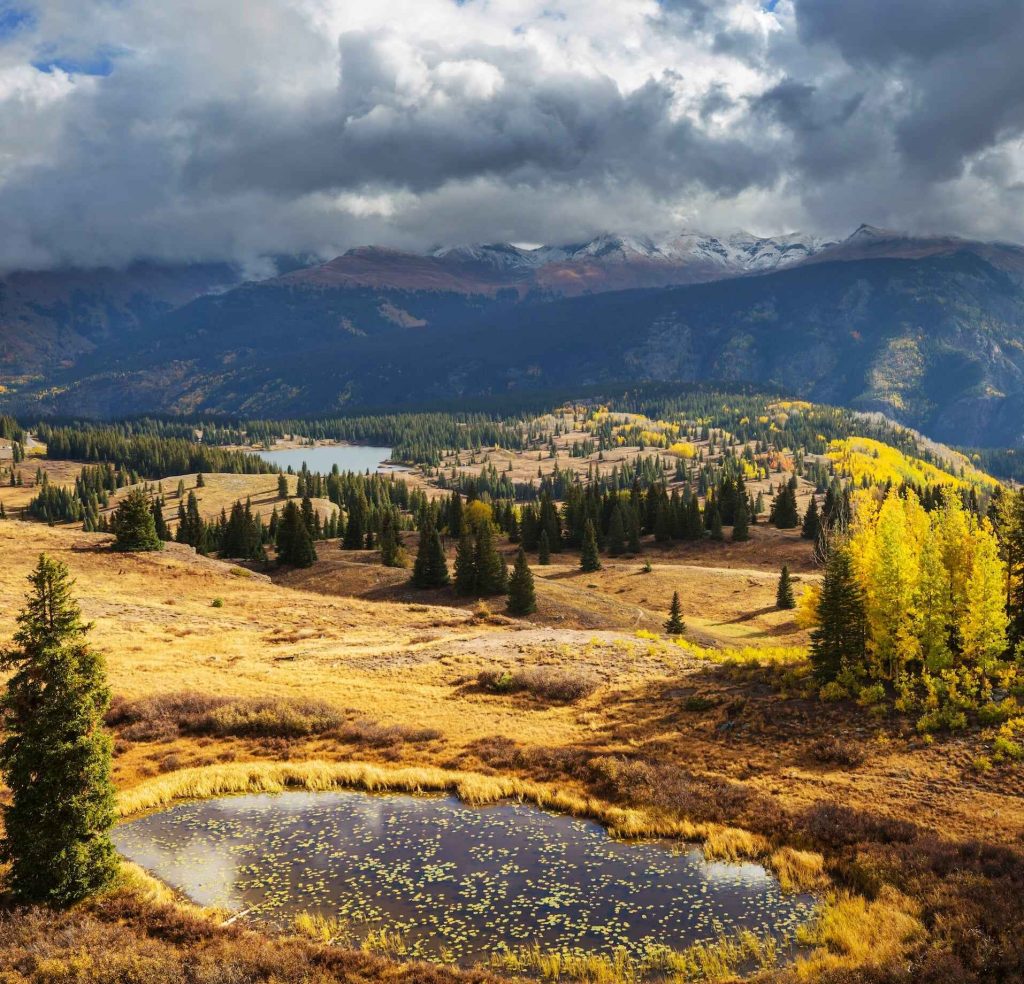If you’re based in Colorado with property, your land may host protected wetlands. Colorado Parks and Wildlife (CPW)’s Wetland Wildlife Conservation Program has awarded over $25 million in state funds since 1997 to protect, restore or create almost 220,000 acres of wetlands and adjacent habitat and more than 200 miles of streams, according to the National Association of Wetland Managers.
In general, you can build on your Coloradoan wetlands. However, there are federal protections in place that may require you to take mitigation measures or avoidance strategies to preserve your wetlands’ natural habitat and water quality.
This guide aims to help you understand the difficulties surrounding wetlands development, and how an experienced civil engineer can help you navigate the permitting process. Let’s dive in.

How are wetlands protected?
Wetlands are protected by the Clean Water Act of 1972, which also ensures the physical, biological, and chemical quality of water across the United States. The Clean Water Act protects wetlands by imposing rules on dredging, filling, and building activity on wetlands.
In short, the Clean Water Act mandates permits for wetlands development through Section 404. This ensures that land developers’ impact on wetlands won’t significantly impact their environment or contaminate the waters. Learn more about Section 404 of the Clean Water Act.
Who enforces wetland regulations?
Wetland regulations are managed by the federal government, specifically by the U.S. Army Corps of Engineers and the Environmental Protection Agency (EPA). In Colorado, the state government also plays a role in reviewing and enforcing permits to ensure compliance with federal and state laws.
How do I know if my property contains wetlands?
In Colorado, you can start exploring if a property is documented as having wetlands by exploring the Wetlands Mapper created by the Colorado Wetland Information Center. This tool helps provide insight into whether a permit will be needed before you start construction.
The 1987 Corps of Engineers Wetlands Delineation Manual and Regional Supplements contains more detailed information about wetlands identification information.
When you want to build near or on a wetland
Wetlands play a crucial role in flood control, water purification, and supporting wildlife habitats. Any disruption to these areas can have long-lasting environmental consequences. To ensure compliance with regulations and minimize environmental impact, it’s essential to work closely with a civil engineer who specializes in water engineering.
Here are the steps to take when planning construction near wetlands:
1. Consult a Civil Engineer Specializing in Water Engineering
Start by consulting an environmental civil engineer who is experienced in wetland and water management. These professionals understand the complexities of wetlands and can help you navigate the permitting process while ensuring that your project complies with Section 404 of the Clean Water Act. They will assess your site and provide recommendations to mitigate impacts.
2. Conduct a Wetland Delineation
Your civil engineer will help coordinate a wetland delineation study to officially identify the boundaries of wetlands on or near your property. This step is crucial to understanding the extent of the wetlands and ensuring that your development avoids or minimizes disruption.
3. Evaluate Potential Environmental Impact
Once the wetlands are identified, your engineer will evaluate the potential impacts of your proposed project. This may involve creating plans to reduce water runoff, limiting construction near wetland edges, and ensuring that local wildlife won’t be harmed during the construction process.
4. Obtain Necessary Permits
With your civil engineer’s guidance, you’ll need to apply for a Section 404 permit from the U.S. Army Corps of Engineers. Your engineer will assist with preparing the necessary documentation, including impact assessments and mitigation plans.
5. Develop a Mitigation Plan (If Required)
If complete avoidance of the wetlands isn’t possible, your engineer will develop a mitigation plan. This might involve wetland restoration, enhancement, or creation elsewhere to compensate for any impact your project may have on the ecosystem.
6. Monitor Compliance Throughout the Project
After construction begins, your civil engineer will monitor the project to ensure compliance with all permits and regulations. This ensures that you stay within the legal framework and maintain the health of surrounding wetlands.
By partnering with a civil engineer who specializes in water engineering, you can ensure that your project is designed to protect wetlands while meeting your construction goals. Their expertise is invaluable in navigating the complexities of wetland regulations and environmental protection requirements.
What to know for your wetland delineation permit
A wetland delineation permit is required when planning to develop near wetlands. The permit process involves several steps to ensure minimal environmental disruption. The three key strategies used to meet Section 404 requirements are avoidance, minimization, and mitigation.
Avoidance
Avoidance means designing your project to completely bypass wetlands, ensuring that construction has no direct impact on the area.
Minimization
Minimization involves adjusting project designs to reduce impacts on wetlands. This might include altering building locations or limiting the size of the disturbed area.
Mitigation
If avoidance or minimization isn’t possible, mitigation becomes necessary. This involves creating, restoring, or enhancing wetlands elsewhere to offset any negative effects of your project.
Consult with environmental civil engineers today
Protecting wetlands is vital to supporting our local ecosystem and biodiversity. To ensure that your Colorado wetland development is done sustainably and up-to-code, consult with environmental civil engineers to navigate the permitting process and develop a compliant project plan.
Roaring Fork Engineering is a civil engineering firm with expert water engineering services, designed to keep our natural world in mind while still accomplishing your development goals. Working with our professional team ensures that your project will meet all legal requirements and protect Colorado’s unique wetlands.